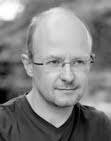And another Mongolia book
 Yesterday I was at the Dutch Photo Museum (Nederlands Fotomuseum, Rotterdam) where I picked up another Mongolia photobook. It's a recent publication by young Dutch photographer Marco van Duyvendijk (1974).
Yesterday I was at the Dutch Photo Museum (Nederlands Fotomuseum, Rotterdam) where I picked up another Mongolia photobook. It's a recent publication by young Dutch photographer Marco van Duyvendijk (1974).The colophon of the book mentions: "Marco van Duyvendijk was born in Den Helder, the Netherlands. He studied psychology at Utrecht University, and after his studies started out as a self-taught photographer. During the past years his photography focused on life in Central and Eastern Europe, with the emphasis on Romania. (...) On invitation from the Mongolian Consulate he spent the winter of 2003 and summer of 2004 in Mongolia. The book is the result of those two trips."
"Mongolia" is a thin but generously sized book showing roughly 80 colour photographs. The colour palette is strikingly different from the vibrant, romantic colours used by Michel Setboun in his study. Here we have the washed-out greys, ochres, pinks, brick reds and pistachio greens so typical for Mongolian cityscapes and interiors. It works well and gives the book a distinctive style. What I'm less sure about is the general texture and sharpness of the photos. This must be 35mm format pictures enlarged to just about their limit. Or it may be that the muted colour palette creates an impression of less acutancy. Personally, I like them sharper.
In terms of motivic choice, Marco van Duyvendijk refreshingly steers away from the cliche, even if most of his settings are familiar from other books (city dwellers, nomads, the monasteries, the mines, Nadaam). But there are some unconventional locales too: an abandoned Soviet military base, circus and ballet schools, a maternity ward. About a third of the book is given to head-and-torso portraits, very much in the contemporary style with sitters looking coolly detached in the lens. The pictures of urban youth with avant garde outfits sporting nazi swastikas may be disappointing to those still hanging on to the myth of the noble nomad.
All in all this is a very judiciously composed portfolio, the whole of which is more than the sum of the parts. To my mind, there is not one picture which can lay claim to timeless greatness, but altogether we have an honest and sober portrait of contemporary Mongolian society.
Marco van Duyvendijk, 2005, Mongolia, Artimo Press, Amsterdam.


0 Comments:
Post a Comment
<< Home